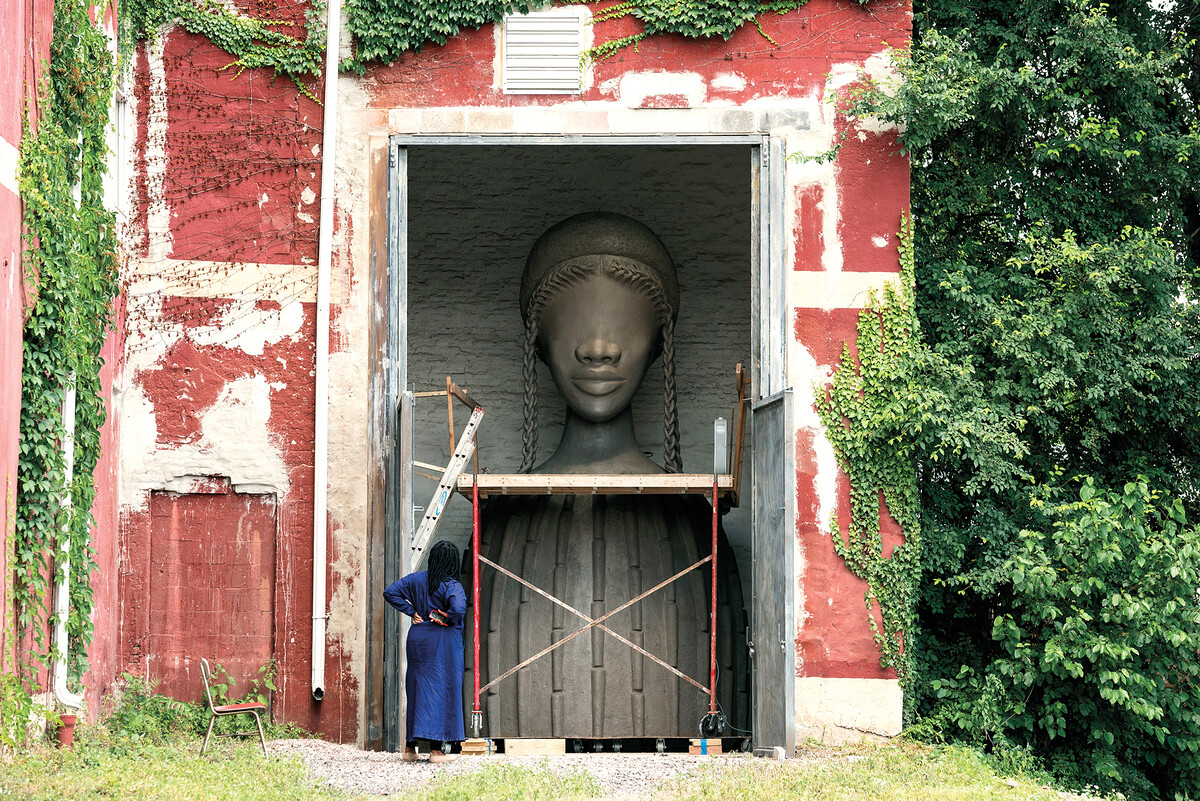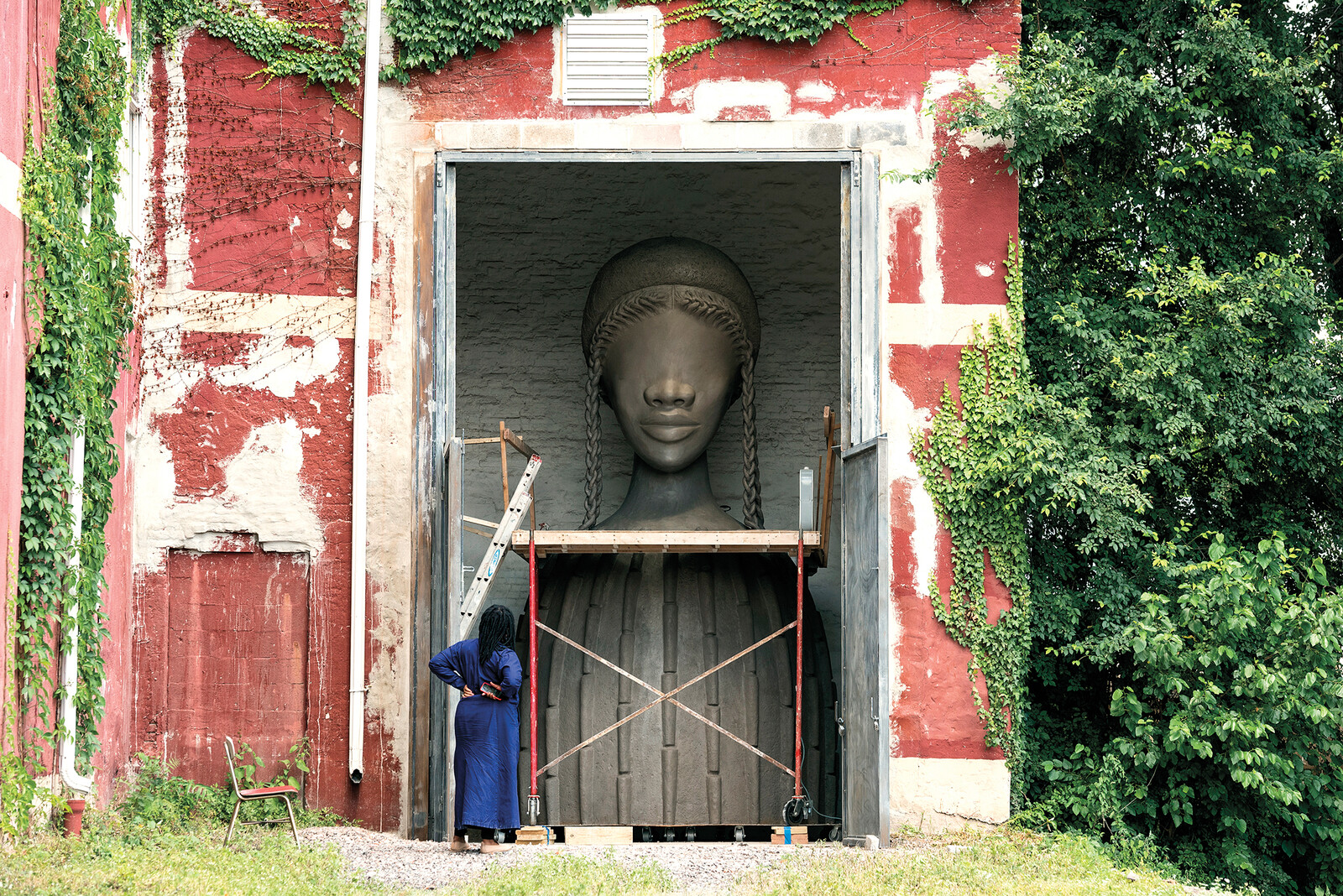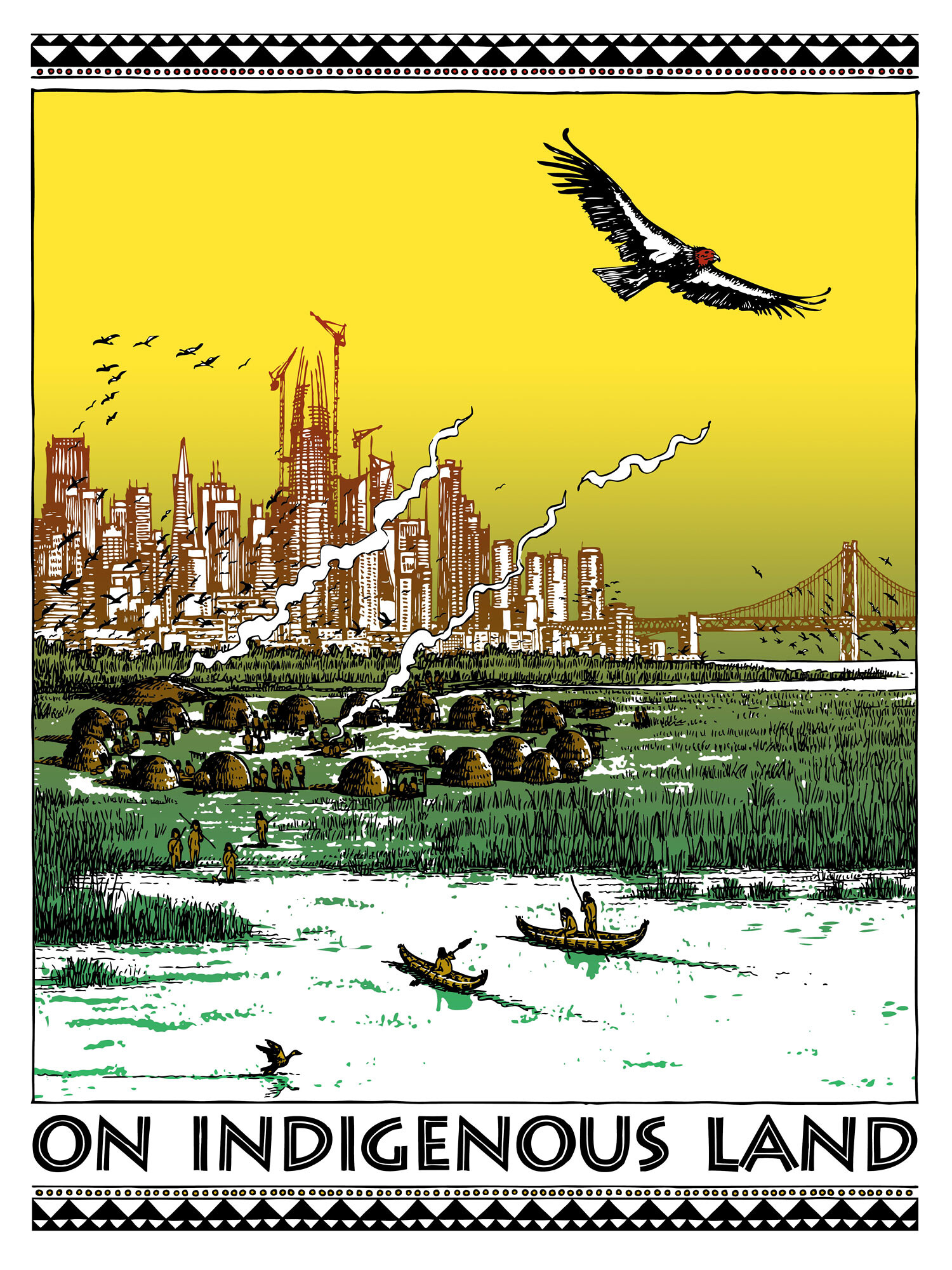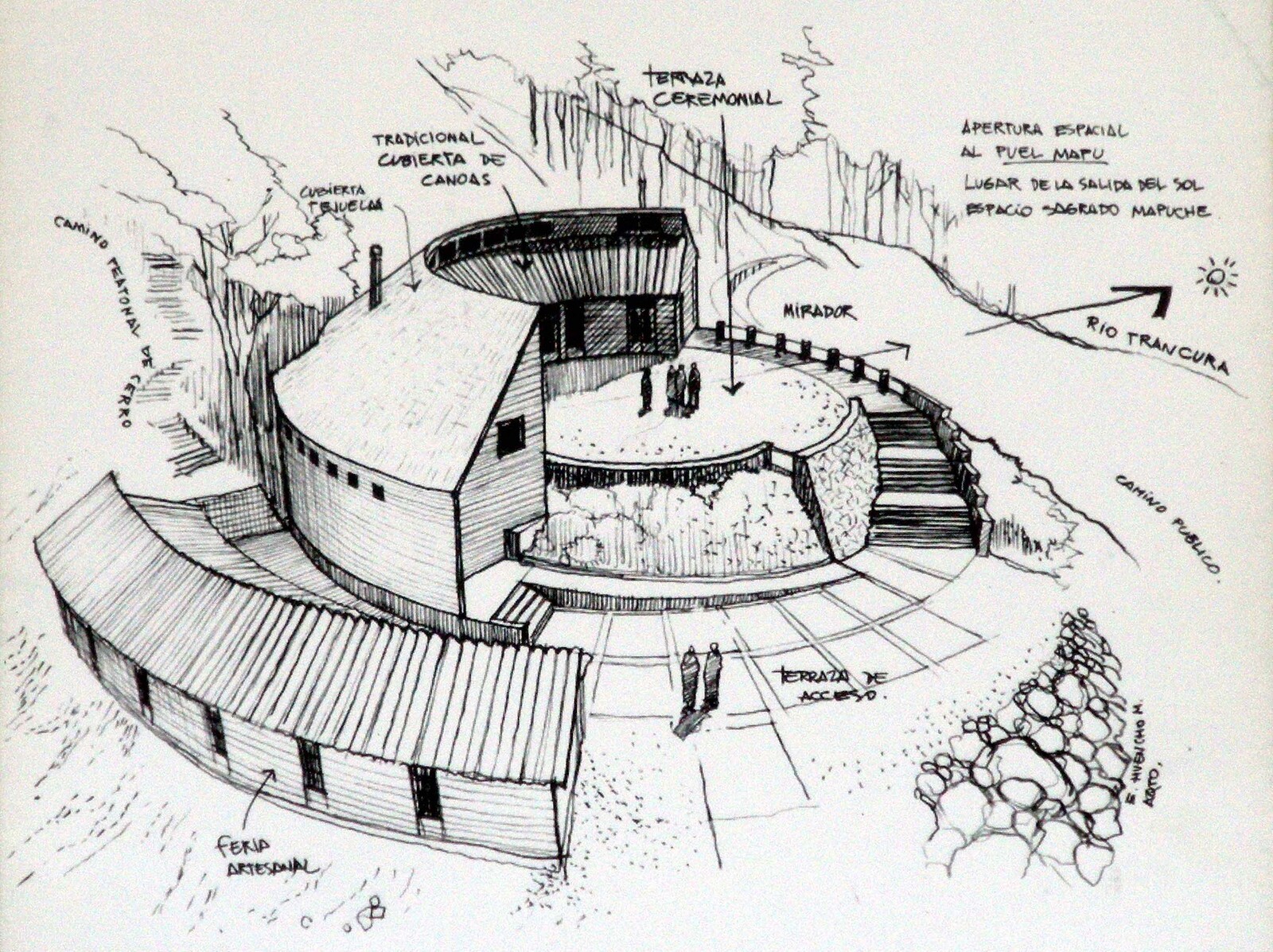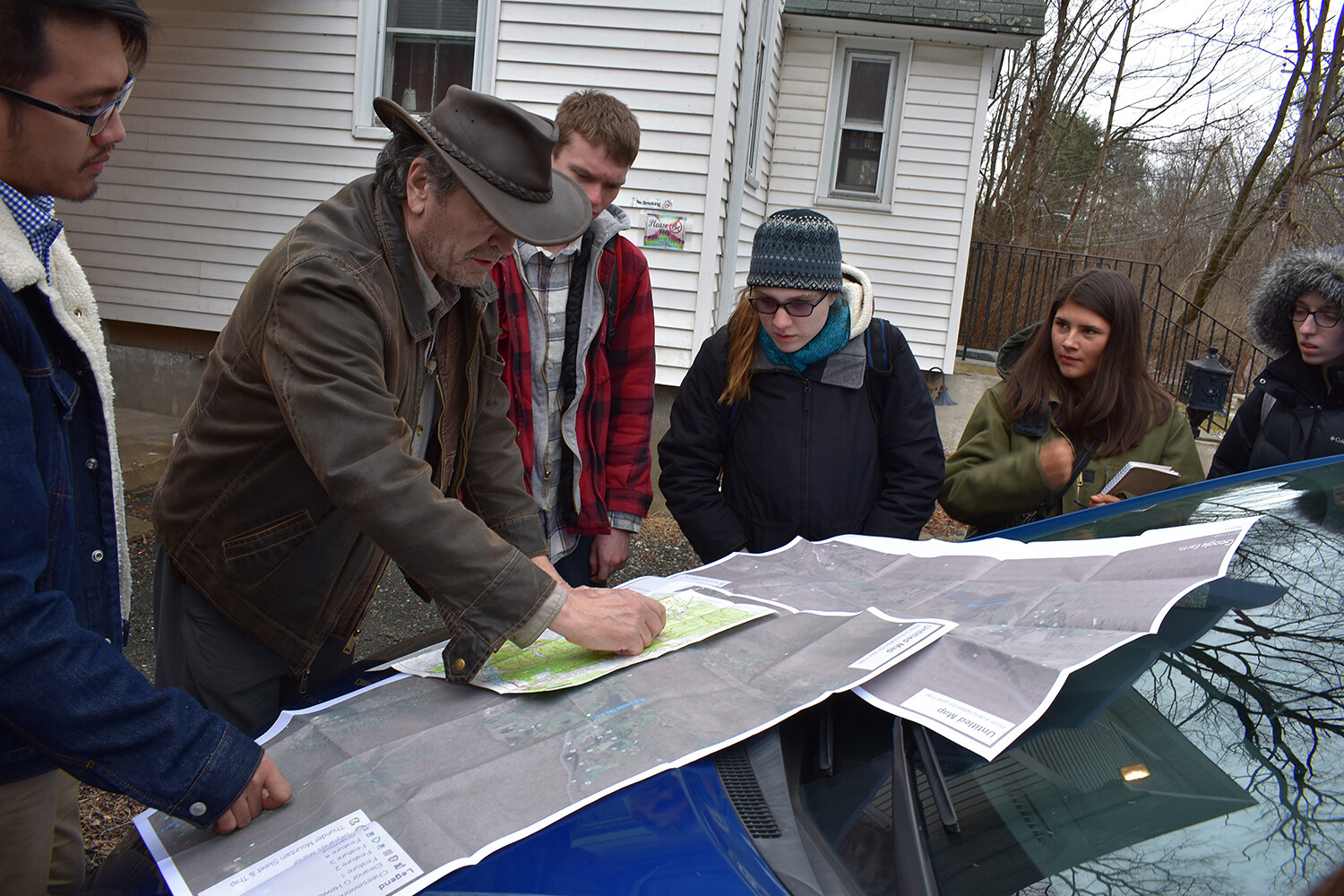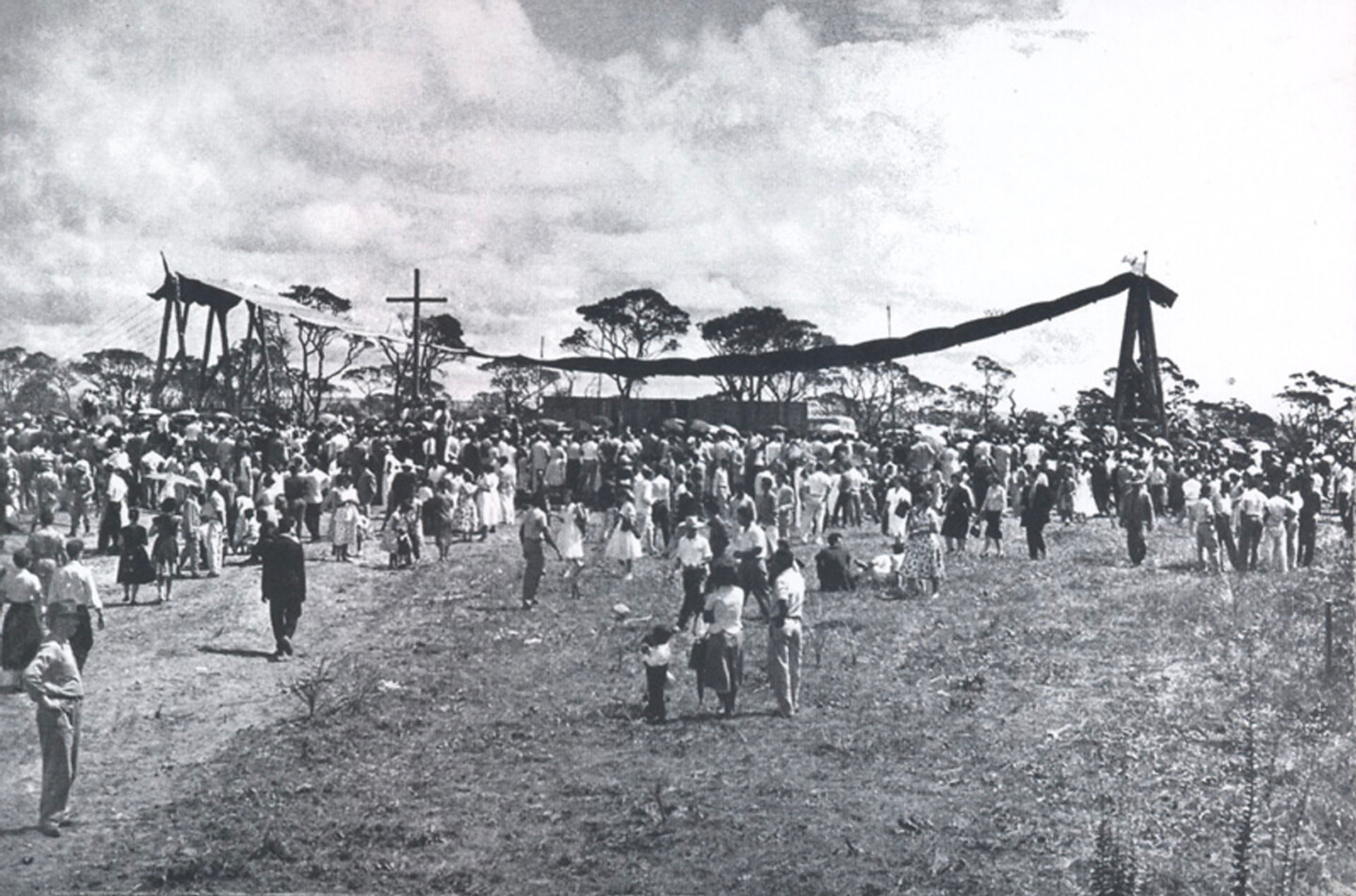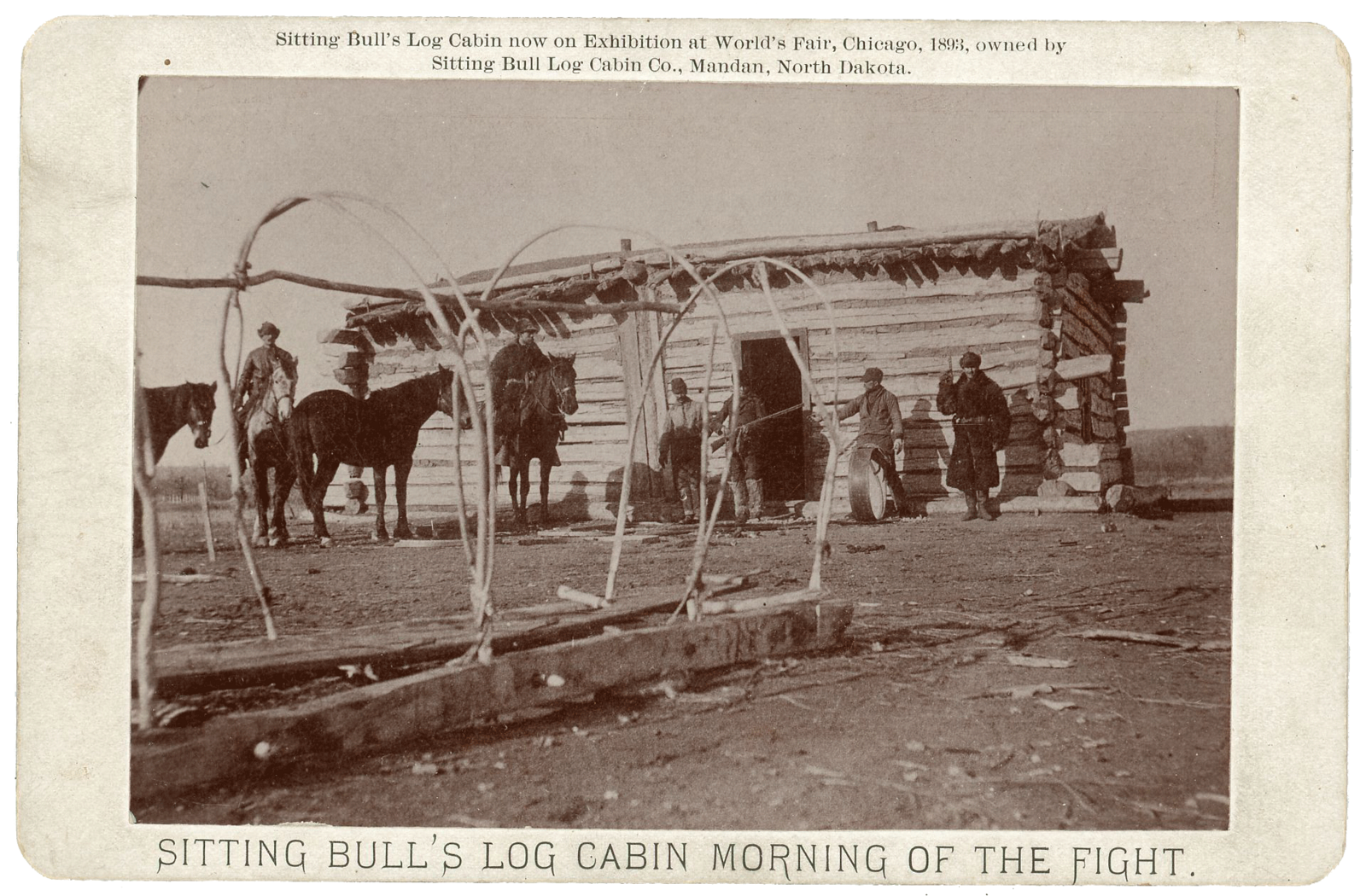The plantation is a persistent but ugly blueprint of our contemporary spatial troubles.
—Katherine McKittrick 1
Sustainability is the new architectural innocence
The touchstone for green building, Leadership in Energy and Environmental Design (LEED) certification is the most popular standard used by builders in the United States to demonstrate their environmental responsibility in metrics of increased energy and water efficiency. Notwithstanding its contributions to greener design, LEED certification also fabricates innocence for development projects with massive carbon footprints, complex problems of sourcing and finance, heavy demands on municipal infrastructure, and complicity with displacement. Sustainability is the present story of the settler colonial future. Modernism and “slum clearance” were the prior narratives of progress. Not long before that, the story was settlement and civilization on wild lands against savage people. Undergirding the veneer of sustainability are settler colonial logics. Plantation logics.
I write from Kumeyaay land, as a provost and professor in my office within the geometric buildings designed by Robert Mosher, A. Quincy Jones, Frank L. Hope, Gayne Wimer, Dale Naegle, and other fathers of modernism in San Diego. To be clear, as my critique may suggest otherwise, I love these buildings. Their shapely concrete faces. Their hive-like cubical details. Their sleek edges. The vines growing into their skins, like a jungle claiming the hulls of aging spaceships. I will love the new buildings too, rising up adjacent to ours; half-century younger models of modernity.
Next door to us, cranes raise the newest structures on our campus colony—LEED certified of course. As an administrator, I attend many meetings about future construction on this campus, which is destined to become the largest residential university in the country. To say that a building is sustainable brings smiles to the otherwise concerned faces of students, who in meetings question what the rents will be, how parking will be impacted, who will pay for the campus expansion, and how large the carbon footprint of the construction will be. LEED helps us reassure each other that ours is an architecturally innocent project. Add in a landscape of native plants, water catchments, and a biodigester that creates natural gas torches to light up outdoor patios, and we have a state-of-the-future model worthy of science fiction imaginaries.
I cannot help but think about how our massive sourcing of capital and material and water and gas and electricity are all connected in a web of extraction with its roots in a plantation logic:
The plantation normally contains a main house, an office, a carriage house, barns, a slave auction block, a garden area, slave quarters and kitchen, stables, a cemetery, and a building or buildings through which crops are prepared, such as a mill or a refinery… Plantation towns are linked to transport—rivers, roads, small rail networks—that enable the shipping of crops, slaves, and other commodities. This is a meaningful geographic process … an economic structure that would underpin town and industry development in the Americas.2
Where I write, California cities are named after Spanish missions and presidios, dots on a map connected by King’s Highways and galleon trade routes. Missions were built on plantation economies, and torture, and enslavement, and militarization, and land speculation. Mission Basilica San Diego de Acalá and Friars Road and El Camino Real and Manila Galleon routes are the skeletons for our modern-day infrastructure. I am only a recent occupant in our settler colonial present.
Ours is a precarious sustainability. Electricity, water, food, internet, and all essential items are piped, trucked, or lifted into our campus colony. The buildings are mortgaged several decades into the future. We need to generate revenue in order to support existence and expansion. Occupation is the answer. Students desiring a future for themselves—willingly, we hope—will pay rent to live and study here. This precarity is suddenly revealed in the clarity of crisis. A pandemic arrives, and nearly all our students leave. We are now surviving in a state of semi-abandonment. Bills accumulate. Workers must be laid-off. Construction is slowed. On a depopulated campus, settlement seems uncertain even as settlement is the only solution for sustaining this colony.3
I write from inside a modernist ruin. Concrete blocks are literally falling from the sky, as the gridded façades of the main tower crumble. We have put up scaffolding—not to scale the sides, but as umbrellas to deflect against the falling concrete. Ironically, we received a prestigious Campus Heritage Grant from the Getty Foundation to create a preservation plan for these buildings. The ruin is a reminder and a prophecy: sustainability is a myth.
The praises of architectural wonders are always part science fiction and part historical myth. They function as advertisements for not yet possible utopias, like the promises of off-world life for earthlings on a dying planet in Blade Runner. Myth is the pickled narrative of progress that has been preserved, canned, and fed to us on every national holiday. Behind this myth are the structures of settler colonialism and racial capitalism, embodied by such architectural wonders as the prison, the presidio, the mission, and the plantation. Settler utopianism guides our blueprints, because settler colonists benefit from its architectures of accumulation “here,” and are insulated from its cumulative harm done to no-bodies nowhere.4 The logic of the plantation, when spelled out, illuminates the present of settler colonialism, but also the underground of Black survivance.
The plantation is still a marketable metaphor in architecture
Plantation Homes is the name of a homebuilder in the Dallas-Fort Worth metropolitan area. Each suburban house is LEED certified. The unabashed use of “plantation” in fantasy-home-building may feel repugnant to some, maybe politically incorrect to others.5 Yet it is poetically truthful, to me, that plantation and sustainability come crashing together in suburban home-building discourse. In this rhetoric, we see the preservation of the plantation meta-narrative, wrapped over present-day settlement, and projected as a sustainable future.
The plantation meta-narrative is one of gentlemen farmers and ladylike dames with lives of opulence and leisure; of grateful smiling servants the color of coal; of native soil without Native peoples. I am reading Katherine McKittrick’s reading of Sylvia Wynter, who writes about the plantation and the plot. For Wynter and McKittrick, the plantation serves as the economic and racial blueprint for the American nation-state-empire. Playing on the word “plot” to mean both a plot of land and the narrative arc of a story, Wynter points out how the plantation gives rise to the American novel. Indeed, many American novels are set on the plantation: think about Gone with the Wind as the evocative plantation romance. Fantasies of aristocratic femininity gave rise to contemporary fantasies of white femininity. Threats to the planter lifestyle are depicted as always just around the historical corner: Emancipation, Reconstruction, desegregation, equality. Plantation is the master narrative, the dominant plot of America.6
The spatial architectures of transport, imprisonment, and resource extraction sustain the plantation. Today’s capitalist ecology is not different, only much more sophisticated and expansive in geographies, so that the barns and blocks—and Browns and Blacks—are kept at much greater sociopolitical distance from the amenities of the plantation homes. The manufacture of solar panels leaves toxic landscapes in China. Tesla home batteries frack Indigenous lands in the salt flats of the Andes. Master planned suburbs need no jails as caged persons can be exported to distant townships. Toxins and state violence and homelessness can be concentrated elsewhere. Indeed, the plantation has “a built-in capacity to maintain itself” through its interdependence with racial violence and extraction in remote elsewheres.7 Its economies, racial order, and ability to self-sustain through the invisibilized inefficiencies of extraction might feel familiar because we are living its science fiction future. “The plantation moves through time, a cloaked anachronism, that calls forth the prison, the city, and so forth.”8
The first sustainable English settlement in North America was Jamestown
The plantation is both architecture and the story we tell about it—place and plot. In the mythical story of the European presence in North America, Jamestown, Virginia is narrated as the first permanent—sustainable—English settlement despite its successive failures and eventual abandonment. Kate McCoy attributes the multiple collapses of James Fort (1604) and then James Town (1609) to monoculture crop production—tobacco—that created the acute contradiction of producing profits even while would-be colonists starved to death:
For sustenance, they relied on supplies from England and uneasy trade with the Tsenacommacah. Neither source proved consistent. No gold was found, other efforts at making money failed, starvation was rampant, and mortality rates were shocking. And still, the Virginia Company “never considered the problem of staying alive in Virginia to be a serious one.” Though the settlers likely could have fed themselves, their efforts were focused on making money. They tried olives, silk, pitch, timber, tar, soap ashes, glass blowing, and cedar, but they could not capture an English market. They compromised their relationship with the Tsenacommacah through senseless killings and torture, cutting off their only supply of food from the region. Had it not been for tobacco, settler colonialism may not have taken hold when it did. 9
The European craze for tobacco produced a speculative economy that gave rise to the Southern plantocracy; its repercussions we still feel today. But tobacco is not what sustained Jamestown.
Slavery and land theft sustained Jamestown. In the Black August of 1619, the Virginia Company purchased twenty abducted Africans; they created new laws permitting land held in common to become individualized private property for previously indentured white servants. Thus, Jamestown was sustained by a plantation triad: the invention of Black people as property, the invention of Indigenous land as claimable private property, and the invention of white people as property owners. Sustainability is premised on the expansion of chattel slavery, of land accumulation, of Indigenous displacement, of white emplacement, and therefore the expansion of the plantation.
Plots are places of survivance and counternarratives
For Wynter, plot also refers to “the plots of land that were given to some slaves so that they could grow food to nourish themselves and thus maximize profits—plots of land that also became the focus of resistance to the overriding system of the plantation economy.”10 In these plots, Black people found a means to live amid the unsurvivable. While surviving, they sustained plantation capitalism, which depended on their bare life and labor for maximizing profit and for preserving the fantasy of white planter aristocracy. Beyond survival, the plot “spatializes what would be considered impossible under slavery: the actual growth of narratives, food, and cultural practices that materialize the deep connections between blackness and the earth and foster values that challenge systemic violence.”11 In this way, McKittrick and Wynter reveal the intimacy of antiblackness and problackness. Antiblackness is the master plot. Yet Black futures are also born in the other plots, the “secretive stories” that “became a source of cultural guerilla resistance to the plantation system.”12 Black epistemologies and connections to land, knowledges about survival, joy, love and resistance are built in a context of alien abduction, torture, and terror. This plot, the small piece of land where Black people were “planted” in the Americas and marked as forever landless, is yet the site of Black futures. In the plot, McKittrick provocatively suggests, the plantation bears a Black future.13
Wynter and McKittrick also imply other definitions for the word plot. A plan. A conspiracy. A drawing. An architecture.
Jamestown in fact became a site of Black futures, however impermanent and fugitive. During the US Civil War, formerly enslaved Black people found refuge there, and plotted their emancipation. When Jamestown was abandoned by both Union and Confederacy for nearly a year, Black free/fugitive people fought off Confederate agents. They also burned down the Ambler house, an eighteenth-century plantation home that had serviced Confederate officers, and was one of last vestiges of old Jamestown.14 There is no Bench by the Road to remember the Black plotters who finally torched that desecration of a place and of a concept—Jamestown, the first sustainable settlement.15 If any Black spatial and architectural practices were created in Jamestown, they are “lost” to history, paved over by plantation preservation.
Say his name: Ahmaud Arbery
Ahmaud Arbery was murdered while jogging through a plantation, through a suburban housing development in Brunswick, Georgia. His crime was violating the architecture of the plantation, by exploring new home construction not meant for him in a mostly white suburban neighborhood hugging the Satilla River. A white resident alarmed by Arbery’s Black presence called the police, who referred the caller to the local vigilantes, who chased him down and shot him and were not arrested. The whole operation smacked of plantation logic, of Jim Crow, of Black Codes. But the very geography—“the economy, the landscape, the architecture”—was always already a site of racial violence.16 The construction site that Arbery visited was to become “a house where you could have a dock at the back and push a button to just let your boat down into the water.”17 The fantasy of white leisure is part and parcel to segregation from the Black bodies whose disposability and labor make such privilege possible. Arbery’s home, his “plot”, was within jogging distance just across US Route 17. The future home with the boat dock is an example of “the locations the oppressed should strive toward.”18 This is the land of preserved historic plantations: Altama Plantation, Butler Island Plantation, Retreat Plantation, Hofwyl-Broadfield Plantation, Hamilton Plantation, Hampton Plantation. But there is no Bench by the Road to remember the Black majority who worked, lived, loved, and plotted in them.19
By one counternarrative, Arbery planned to be an electrician and was studying the house-under-construction that he was visiting.20 One might imagine him gazing at the exposed insides of electrical wiring, plumbing, ducts, and insulation. In this story, Arbery is an architect (a fugitive, illegalized one) sketching blueprints in his mind’s eye. He is plotting architectural drawings for a home where none can exist for him. In the master narrative of his killers and of the lawmen who abetted in vigilantism, he is a thief, but what is he stealing? He is taking mental photographs, he is drawing up blueprints, he is stealing a glimpse. He is plotting his own Black future—his own where in a nowhere.
She plots futures
“June Jordan was an architect,” Alexis Pauline Gumbs insists. By the literal definition of architect as designer of buildings, as well as by the Wynter-y sense of architect as plotter of Black futures, the Black feminist poet, professor, teacher, and architect June Jordon did plot buildings and did plot freedom. Her design “Skyrise for Harlem” with R. Buckminster Fuller appeared in Esquire in 1965. She herself was uncredited with the design, and her essay about it was published under the changed title, “Instant Slum Clearance.”21 Today, their work is included in a retrospective on the Esquire website, which mockingly calls the design a “Judge Dredd-like” dystopia.22 Yet Jordan’s conceptualization was a direct challenge to actual, contemporary dystopias—the urban housing projects of New York City designed by “master builder” Robert Moses. In her own words:
Redevelopment generally means the removal of slum residents while land is cleared for new buildings and new purposes. In fact, “redevelopment” is frequently a pretext for the permanent expulsion of Negro populations. Fuller’s design permits all residents to remain on site while new and vastly improved dwelling facilities rise directly above the old. No one will move anywhere but up.23
Whereas Moses’s housing projects deliberately displaced poorer communities to pave way for a whiter metropolis, and actively cut off Black communities from the rest of the city, Jordan had the audacity to imagine an expanded Harlem, integrated with the rest of the city “by removing old limits in exchange for natural boundaries. Harlem will widen from river to river across the island.” What other architect has designed possibilities for Black life that keep Black communities intact, Black people emplaced, and Blackness integrated into the landscape?24 Check out her design, and decide if it looks like Wakanda to you too.
June Jordan’s work as a writer, a counternarrator, offers the other half of the antithesis to plantation logic. Her first novel, His Own Where, narrates how two Black teens, Buddy and Angela, demolish the Victorian interior of a brownstone in Brooklyn and rebuild a modernist world inside it. Theirs is an abolitionist architecture. Black architectural historian Charles Davis II actually constructs a model of Buddy and Angela’s world, calling Jordan’s “architextural” musings “a radical black version of architectural culture.”25 When reading about the utopia that the two unauthorized, uncertified, capital-less, Black youth construct inside a row house, inside an urban spatiality overdetermined by racism, I cannot help but think of Simone Leigh’s team of sculptors building “Brick House” inside a brick warehouse inside Philadelphia inside America.
The photograph of Simone Leigh’s Brick House in progress speaks to what is being built, and by whom, inside and underneath the architecture of the settler colonial present. Alexis Pauline Gumbs asks, “What does an architect who is accountable to the bottom of the barrel, who can give an account of what that rock and hard place space of choosing feels like, what does that architect imagine and build?”26 Brick House offers a possible universe of answers to her question. Like many of Leigh’s works, the body of Brick House is Black woman and home, built from self and memory and ingenuity, an impossibly strong shelter within a plantation landscaped for terror. Denise Ferreira da Silva speaks of “the doings” of Simone Leigh, and of the Black women who make freedom: “that doing vibrates as a feat, a deed, a burden, or an artifact.”27 Leigh’s Brick House and other work in her Anatomy of Architecture series puts into form how the Black woman is both architectural and an architect of the impossible, that is, of freedom.
Katherine McKittrick, “Plantation futures,” Small Axe: A Caribbean Journal of Criticism 17, no. 3 (2013): 1–15, 11.
Ibid., 8.
Kumeyaay traditional architecture worked with naturally adaptive materials that were moisture responsive to build ’ewaa that were cool in the summer and warm in the winter. Laguna Resource Services, Inc., Kumeyaay Heritage and Conservation (HC) Project: Learning Landscapes Educational Curriculum (El Cajon: Kumeyaay Diegueño Land Conservancy, 2016).
“Where is that place where what should not ‘happen to nobody’ happens every day?” Denise Ferreira da Silva discusses the relationship between exceptionalized places of violence and people exceptionalized as non-persons. Settler utopias depend on these racialized places/bodies where exceptional harm is naturalized. Denise Ferreira da Silva, “No-bodies: Law, raciality and violence,” Griffith Law Review 18, no. 2 (2009): 212–236.
Interestingly, the builder started phasing out the name Plantation Homes in August 2020, just as I finished writing this essay, in favor of Coventry Homes, which only further echoes the ways that American plantations referenced imaginary British aristocratic lifestyles. See Plantation Homes; Coventry Homes, “Coventry Homes,” YouTube, August 13, 2020, ➝.
See: Sylvia Wynter, “Novel and history, plot and plantation,” Savacou 5, no. 1 (1971): 95–102; McKittrick, “Plantation futures.”
George Beckford as quoted in McKittrick, “Plantation futures,” 5.
McKittrick, “Plantation futures,” 9.
Kate McCoy, “Manifesting Destiny: A land education analysis of settler colonialism in Jamestown, Virginia, USA,” in Land Education: Rethinking pedagogies of place from Indigenous, postcolonial, and decolonizing perspectives, eds. Kate McCoy, Eve Tuck, and Marcia McKenzie (New York: Routledge, 2016), 88.
McKittrick, “Plantation futures,” 10.
Ibid.
Wynter, “Novel and History,” 100.
McKittrick, “Plantation futures,” 12–15.
This act reminds me of how Kumeyaay warriors burned down the first California Mission (San Diego de Acalá), shortly after it was built. See David F. Riggs, “Jamestown During the Civil War,” National Park Service, April 12, 1999, ➝.
“Bench By The Road Project,” The Toni Morrison Society, 2020, ➝.
McKittrick, “Plantation futures,” 9.
Bert Roughton, Jr., and Brad Schrade, “Records show a neighborhood on edge before Arbery’s final run: Brunswick Area Shooting,” The Atlanta Journal-Constitution, May 17, 2020, ➝.
McKittrick, “Plantation futures,” 9.
“Bench By The Road Project.”
Nicquel Terry Ellis, “‘A good kid’: Ahmaud Arbery remembered as ‘humble guy’ with plans to become an electrician,” USA Today, May 15, 2020, ➝.
Alexis Pauline Gumbs, “June Jordan and a Black Feminist Poetics of Architecture,” Neo-Griot, March 21, 2012, ➝.
Kevin Kryah, “6 Wild Predictions of the Future from Esquire’s Archives,” Esquire, May 18, 2015, ➝.
June Meyer, “Instant Slum Clearance,” Esquire, April 1, 1965, ➝.
This is not intended as a rhetorical question. It connects to other questions: What is the architecture of refuge, of fugitivity? What is the architecture of Indigenous sovereignty? What is the architecture of Black and Indigenous futurity?
Charles Davis II, “Black Spaces Matter,” Aggregate 2, March 2015, ➝.
Gumbs, “June Jordan.”
Denise Ferreira da Silva, “How,” e-flux journal 105, December 2019, ➝.
The Settler Colonial Present is a collaboration between e-flux Architecture and the Settler Colonial City Project, with the support of the Department of the History of Art and Taubman College of Architecture and Urban Planning at the University of Michigan.
